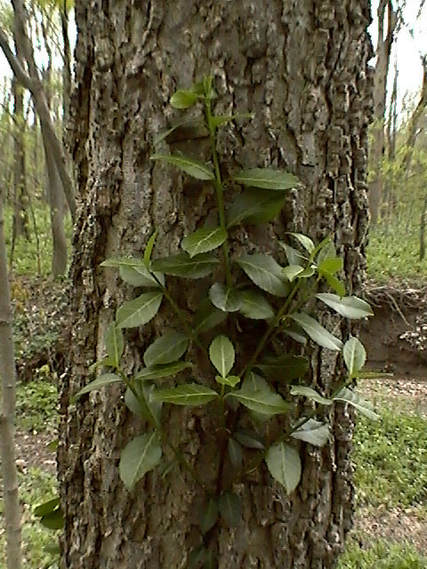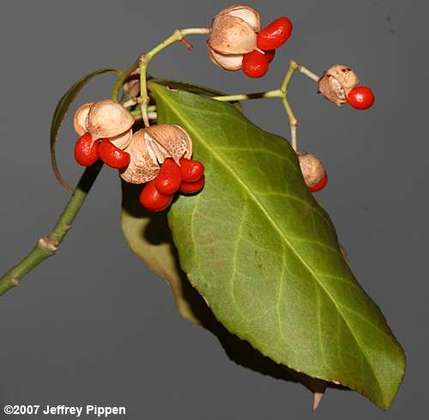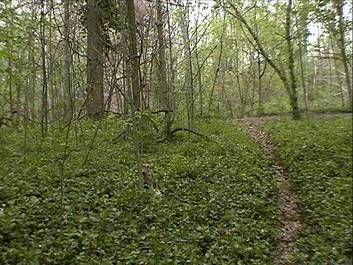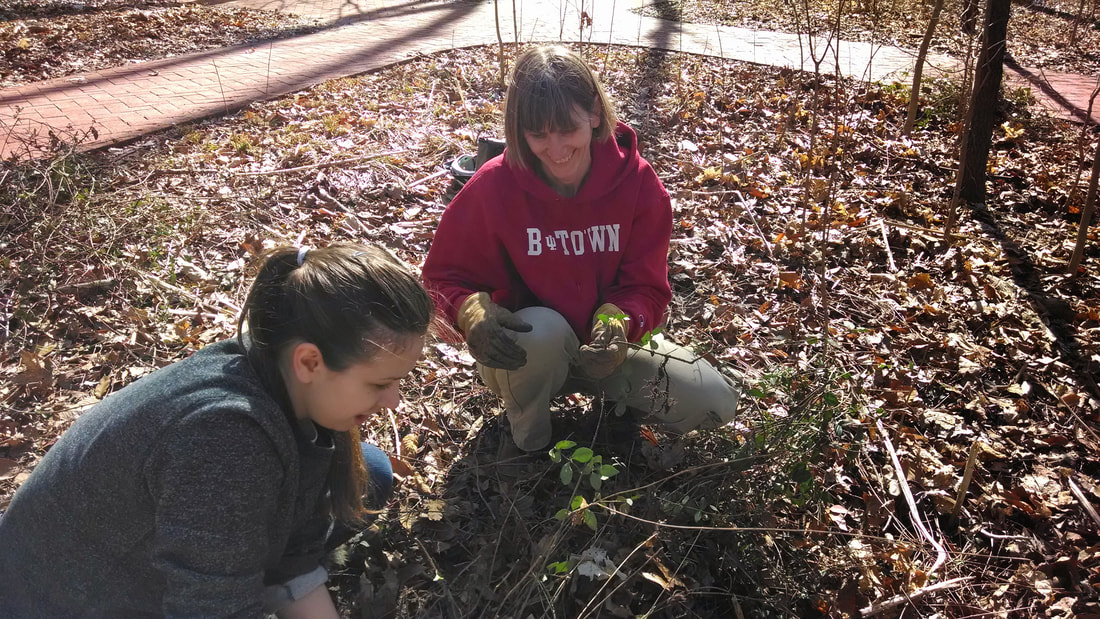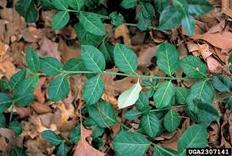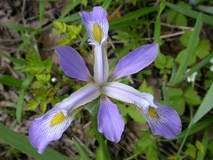|
Purple wintercreeper (Euonymus fortunei)
Threat: Purple wintercreeper is invading many yards and forests in Monroe County, and much of the eastern United States. This invasive vine forms a dense ground cover, swamping out native plant life. This also harms our native wildlife including many species of birds and insects, which rely on native plants for food and other resources. Description and Identification: A climbing, evergreen vine, purple wintercreeper is an invasive species that can reach up to feet tall with dark green, oval leaves about - inches long. Leaves are opposite, simple, and leathery with toothed margins. Roots and stems are thick and woody. Wintercreeper forms a thick ground cover and aggressively creeps up trees. Flowers are small, green, and bloom in clusters during June and July. Fruits are smooth with an orange coating. Because wintercreeper can tolerate a wide range of soils, it is able to grow in a variety of forests and urban, wooded environments. Purple Wintercreeper Video
Click here for a brief educational video on purple wintercreeper from Purdue University Extension.
|
Control Methods
Detailed information on ways to control purple wintercreeper.
|
Fact Sheet
Printable version of this information
|
Landscaping Alternatives
Looking for non-invasive alternatives to purple wintercreeper for your landscape?
|
